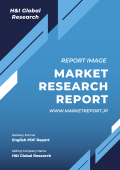1.Research Methodology
1.1.Desk Research
1.2.Real time insights and validation
1.3.Forecast model
1.4.Assumptions and forecast parameters
1.5.Market size estimation
1.5.1.Top-down approach
1.5.2.Bottom-up approach
2.Report Scope
2.1.Market definition
2.2.Key objectives of the study
2.3.Report overview
2.4.Market segmentation
2.5.Overview of the impact of COVID-19 on global Sulfamic Acid market
3.Executive Summary
4.Market Overview
4.1.Introduction
4.2.Growth impact forces
4.2.1.Drivers
4.2.2.Restraints
4.2.3.Opportunities
4.3.Market value chain analysis
4.3.1.List of raw material suppliers
4.3.2.List of manufacturers
4.3.3.List of distributors
4.4.Innovation & sustainability matrices
4.4.1.Technology matrix
4.4.2.Regulatory matrix
4.5.Porter’s five forces analysis
4.5.1.Bargaining power of suppliers
4.5.2.Bargaining power of consumers
4.5.3.Threat of substitutes
4.5.4.Threat of new entrants
4.5.5.Competitive rivalry intensity
4.6.PESTLE analysis
4.6.1.Political
4.6.2.Economical
4.6.3.Social
4.6.4.Technological
4.6.5.Environmental
4.7.Impact of COVID-19 on Sulfamic Acid market
4.7.1.Pre-covid market scenario
4.7.2.Post-covid market scenario
5.Sulfamic Acid Market Analysis, by Form
5.1.Overview
5.2.Powder
5.2.1.Definition, key trends, growth factors, and opportunities
5.2.2.Market size analysis, by region, 2021-2031
5.2.3.Market share analysis, by country, 2021-2031
5.3. Liquid
5.3.1.Definition, key trends, growth factors, and opportunities
5.3.2.Market size analysis, by region, 2021-2031
5.3.3.Market share analysis, by country, 2021-2031
5.4.Research Dive Exclusive Insights
5.4.1.Market attractiveness
5.4.2.Competition heatmap
6.Sulfamic Acid Market Analysis, by Application
6.1.Metal Finishing
6.1.1.Definition, key trends, growth factors, and opportunities
6.1.2.Market size analysis, by region, 2021-2031
6.1.3.Market share analysis, by country, 2021-2031
6.2.Dyes & Pigments
6.2.1.Definition, key trends, growth factors, and opportunities
6.2.2.Market size analysis, by region, 2021-2031
6.2.3.Market share analysis, by country, 2021-2031
6.3.Paper & Pulp
6.3.1.Definition, key trends, growth factors, and opportunities
6.3.2.Market size analysis, by region, 2021-2031
6.3.3.Market share analysis, by country, 2021-2031
6.4.Plastic
6.4.1.Definition, key trends, growth factors, and opportunities
6.4.2.Market size analysis, by region, 2021-2031
6.4.3.Market share analysis, by country, 2021-2031
6.5.Others
6.5.1.Definition, key trends, growth factors, and opportunities
6.5.2.Market size analysis, by region, 2021-2031
6.5.3.Market share analysis, by country, 2021-2031
6.6.Research Dive Exclusive Insights
6.6.1.Market attractiveness
6.6.2.Competition heatmap
7.Sulfamic Acid Market, by Region
7.1.North America
7.1.1.U.S.
7.1.1.1.Market size analysis, by Form, 2021-2031
7.1.1.2.Market size analysis, by Application, 2021-2031
7.1.2.Canada
7.1.2.1.Market size analysis, by Form, 2021-2031
7.1.2.2.Market size analysis, by Application, 2021-2031
7.1.3.Mexico
7.1.3.1.Market size analysis, by Form, 2021-2031
7.1.3.2.Market size analysis, by Application, 2021-2031
7.1.4.Research Dive Exclusive Insights
7.1.4.1.Market attractiveness
7.1.4.2.Competition heatmap
7.2.Europe
7.2.1.Germany
7.2.1.1.Market size analysis, by Form, 2021-2031
7.2.1.2.Market size analysis, by Application, 2021-2031
7.2.2.UK
7.2.2.1.Market size analysis, by Form 2021-2031
7.2.2.2.Market size analysis, by Application, 2021-2031
7.2.3.France
7.2.3.1.Market size analysis, by Form, 2021-2031
7.2.3.2.Market size analysis, by Application, 2021-2031
7.2.4.Spain
7.2.4.1.Market size analysis, by Form, 2021-2031
7.2.4.2.Market size analysis, by Application, 2021-2031
7.2.5.Italy
7.2.5.1.Market size analysis, by Form, 2021-2031
7.2.5.2.Market size analysis, by Application, 2021-2031
7.2.6.Rest of Europe
7.2.6.1.Market size analysis, by Form, 2021-2031
7.2.6.2.Market size analysis, by Application, 2021-2031
7.2.7.Research Dive Exclusive Insights
7.2.7.1.Market attractiveness
7.2.7.2.Competition heatmap
7.3.Asia-Pacific
7.3.1.China
7.3.1.1.Market size analysis, by Form 2021-2031
7.3.1.2.Market size analysis, by Application, 2021-2031
7.3.2.Japan
7.3.2.1.Market size analysis, by Form, 2021-2031
7.3.2.2.Market size analysis, by Application, 2021-2031
7.3.3.India
7.3.3.1.Market size analysis, by Form, 2021-2031
7.3.3.2.Market size analysis, by Application, 2021-2031
7.3.4.Australia
7.3.4.1.Market size analysis, by Form, 2021-2031
7.3.4.2.Market size analysis, by Application, 2021-2031
7.3.5.South Korea
7.3.5.1.Market size analysis, by Form, 2021-2031
7.3.5.2.Market size analysis, by Application, 2021-2031
7.3.6.Rest of Asia-Pacific
7.3.6.1.Market size analysis, by Form, 2021-2031
7.3.6.2.Market size analysis, by Application, 2021-2031
7.3.7.Research Dive Exclusive Insights
7.3.7.1.Market attractiveness
7.3.7.2.Competition heatmap
7.4.LAMEA
7.4.1.Brazil
7.4.1.1.Market size analysis, by Form, 2021-2031
7.4.1.2.Market size analysis, by Application, 2021-2031
7.4.2.Saudi Arabia
7.4.2.1.Market size analysis, by Form, 2021-2031
7.4.2.2.Market size analysis, by Application, 2021-2031
7.4.3.UAE
7.4.3.1.Market size analysis, by Form, 2021-2031
7.4.3.2.Market size analysis, by Application, 2021-2031
7.4.4.South Africa
7.4.4.1.Market size analysis, by Form, 2021-2031
7.4.4.2.Market size analysis, by Application, 2021-2031
7.4.5.Rest of LAMEA
7.4.5.1.Market size analysis, by Form, 2021-2031
7.4.5.2.Market size analysis, by Application, 2021-2031
7.4.6.Research Dive Exclusive Insights
7.4.6.1.Market attractiveness
7.4.6.2.Competition heatmap
8.Competitive Landscape
8.1.Top winning strategies, 2021
8.1.1.By strategy
8.1.2.By year
8.2.Strategic overview
8.3.Market share analysis, 2021
9.Company Profiles
9.1.Nissan Chemical
9.1.1.Overview
9.1.2.Business segments
9.1.3.Product portfolio
9.1.4.Financial performance
9.1.5.Recent developments
9.1.6.SWOT analysis
9.2.Mingda Chemical
9.2.1.Overview
9.2.2.Business segments
9.2.3.Product portfolio
9.2.4.Financial performance
9.2.5.Recent developments
9.2.6.SWOT analysis
9.3.BASF SE
9.3.1.Overview
9.3.2.Business segments
9.3.3.Product portfolio
9.3.4.Financial performance
9.3.5.Recent developments
9.3.6.SWOT analysis
9.4.AkzoNobel N.V.
9.4.1.Overview
9.4.2.Business segments
9.4.3.Product portfolio
9.4.4.Financial performance
9.4.5.Recent developments
9.4.6.SWOT analysis
9.5.DuPont
9.5.1.Overview
9.5.2.Business segments
9.5.3.Product portfolio
9.5.4.Financial performance
9.5.5.Recent developments
9.5.6.SWOT analysis
9.6.Jiangsu Yazhong
9.6.1.Overview
9.6.2.Business segments
9.6.3.Product portfolio
9.6.4.Financial performance
9.6.5.Recent developments
9.6.6.SWOT analysis
9.7.Palm Commodities
9.7.1.Overview
9.7.2.Business segments
9.7.3.Product portfolio
9.7.4.Financial performance
9.7.5.Recent developments
9.7.6.SWOT analysis
9.8.Yantai Sanding
9.8.1.Overview
9.8.2.Business segments
9.8.3.Product portfolio
9.8.4.Financial performance
9.8.5.Recent developments
9.8.6.SWOT analysis
9.9.Raviraj Group
9.9.1.Overview
9.9.2.Business segments
9.9.3.Product portfolio
9.9.4.Financial performance
9.9.5.Recent developments
9.9.6.SWOT analysis
9.10.Shree Sulphamic Chemicals
9.10.1.Overview
9.10.2.Business segments
9.10.3.Product portfolio
9.10.4.Financial performance
9.10.5.Recent developments
9.10.6.SWOT analysis
10.Appendix
10.1.Parent & peer market analysis
10.2.Premium insights from industry experts
10.3.Related reports











